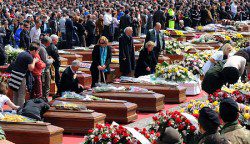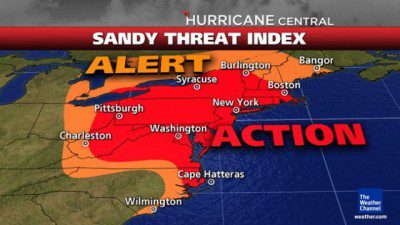Recently, I was asked to serve on two panels at a recent Homeland Security conference; the first dealt with the perception of disaster preparedness vs. the reality of true readiness, the other panel addressed the issues associated with Post-Traumatic Stress Disorder (PTSD) and mental health crisis intervention. I selected the Hurricane Katrina disaster as the focus for both panels. Research notes from my 2011 book “DEADLY NEGLECT: Apathy and Denial vs. Act of God†provided material for the second panel, for which I had more than casual professional interest in the New Orleans Metropolitan Area (NOLA’s) readiness to deal with its greatest geographically bound threat.
Hurricane seasons are and have been a serious concern for my many relatives and friends in the area and pre-Katrina it appeared as if substantial progress had been made to allay “mitigatable†vulnerabilities’ associated with hurricanes. Much attention was given to “Lessons Learned†from recent storms in the region in general and Texas Tropical Storm Allison in particular. The multi-million dollar Southeastern Louisiana Exercise “PAM†was viewed as “proof†that officials were interested in more than the usual talk about preparedness.
 Taking an in-depth look at a continuum from 2000 to 2006 yielded a startling realization (Multiplier Effect) that “what happened in NOLA Katrina†was not only a catastrophic failure in duty to their citizens for public safety in general, and public health and healthcare in particular – but had also created a false sense of safety and security for the trusting public. When the water receded and an angry public and a flawed Justice system saw fit to arrest one physician and two nurses for manslaughter in the course of their duty during hurricane Katrina. After all, failure has its consequences.
Taking an in-depth look at a continuum from 2000 to 2006 yielded a startling realization (Multiplier Effect) that “what happened in NOLA Katrina†was not only a catastrophic failure in duty to their citizens for public safety in general, and public health and healthcare in particular – but had also created a false sense of safety and security for the trusting public. When the water receded and an angry public and a flawed Justice system saw fit to arrest one physician and two nurses for manslaughter in the course of their duty during hurricane Katrina. After all, failure has its consequences.
Contrast that with breaking news from Italy. According to Reuters, six scientists and a government official were sentenced to five years in prison for manslaughter, their crime – failing to adequately warn the good citizens of L’Aquila on the dangers of an earthquake in 2009. Casualty count 309 lives. Is there some sort of “Just Culture†missing its mark?
 Interesting Idea. Setting aside the propensity in the U.S. not to punish its miscreants – “white collar criminals” – there is room for punishment for those who through apathy, denial and neglect cause the needless deaths of hundreds of the nation’s most vulnerable populations, hospital and nursing home patients. The final count of Hurricane Katrina deaths in the New Orleans Metropolitan Area (NOLA) was 971. Three hundred and thirty four (334) were recovered from NOLA Hospitals and Nursing Homes.
Interesting Idea. Setting aside the propensity in the U.S. not to punish its miscreants – “white collar criminals” – there is room for punishment for those who through apathy, denial and neglect cause the needless deaths of hundreds of the nation’s most vulnerable populations, hospital and nursing home patients. The final count of Hurricane Katrina deaths in the New Orleans Metropolitan Area (NOLA) was 971. Three hundred and thirty four (334) were recovered from NOLA Hospitals and Nursing Homes.
Five years before Killer Katrina made landfall, millions had been spent for “known” Disaster Mitigation Act (2000) vulnerabilities. Tropical Storm Allison had flooded the utility systems of the world’s largest hospital system in Houston TX (2001), swamping the normal and emergency utility’s resources. The same vulnerable (known) threat existed in NOLA. Hospital and City Officials were asked if their Emergency utility systems were above the flood plain. “Not if there is a levy breach†but the Officials decided that it would be costly to relocate the existing Emergency generating systems. In early 2004 the million-dollar Southeastern Louisiana Region Exercise “PAM”, was funded to research the impact of a slow-moving Category 3 Hurricane. Ironically PAM’s findings were almost a clone of what was to be Hurricane Katrina, including the levee breach, number of flooded buildings, need for shelter, etc. But on August 29, 2005 Hurricane Katrina made landfall, just another category 3+ Hurricane; one of 14 such storms to make landfall within 100 miles of NOLA in the last 100 years.
State and City Officials and Public Health and Healthcare Executives watched the growing menace enter the Gulf days before and were armed with its direction, speed on an hour-by-hour basis. They also had the findings of “Exercise Pam” as reference of an almost exact scenario of what happened.
Almost forgotten was the previous year’s GAO-04-850 report on the unreliability of external evaluation mechanisms to detect deficiencies in the areas of Healthcare Environments of Care and Life- Safety Issues; another dire warning conveniently ignored before Katrina made landfall. Nevertheless, all Hospitals and Nursing Homes displayed Accreditation and Certifications attesting to their readiness to deal with the area’s most frequent natural threat.
So on one hand, we have seven scientists and a government official serving five years in an Italian prison for failure in their duty to anticipate a deadly earthquake (309 deaths), and on the other hand US Government and healthcare officials who failed to prepared for a known hazard resulting in 971 deaths of which 334 were in hospitals and nursing homes and only arrests for this egregious failure of duty were one physician and two nurses who were placed in their horrible circumstances through no fault of their own. Few would agree that justice was served in either of these events.
This is a timely post as we prepare for Hurricane Sandy; we wrote recently about the failure of Nursing Homes to prepare for this type of event, confirmed by the latest OIGÂ report on this issue, despite the learning opportunity from Katrina and others. As mentioned above, loss of electricity in healthcare facilities -Â hospitals and long-term care – which was exacerbated by not locating the back-up power above the flood plain. The two most important lessons from Katrina were failing to evacuate as was standard practice and recommended in the PAM exercise, and having back-up generators located on the lower floors, which flooded almost immediately, denying life support systems to the most vulnerable patients. While it may be too late at this point to prevent similar deaths with the imminent arrival of Sandy, there should be no excuses for those who have not prepared. How many vulnerable elderly patients are located among that 50 million in harm’s way? How well prepared are those 75,000 (nation-wide) loci of care to protect their vulnerable charges. We doubt that those in the Sandy target area will be as tolerant to the deaths of their elderly populations as was experienced in NOLA.






0 Comments